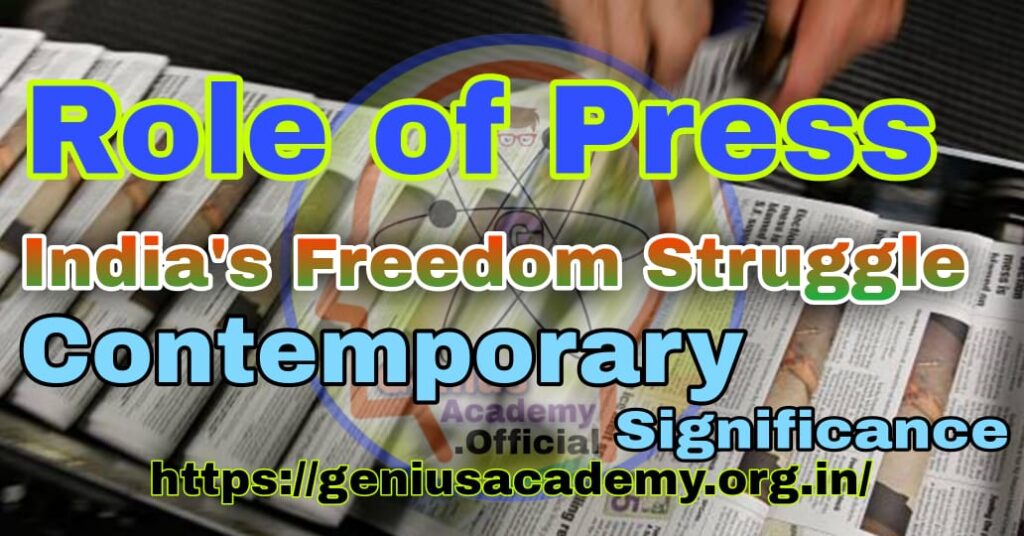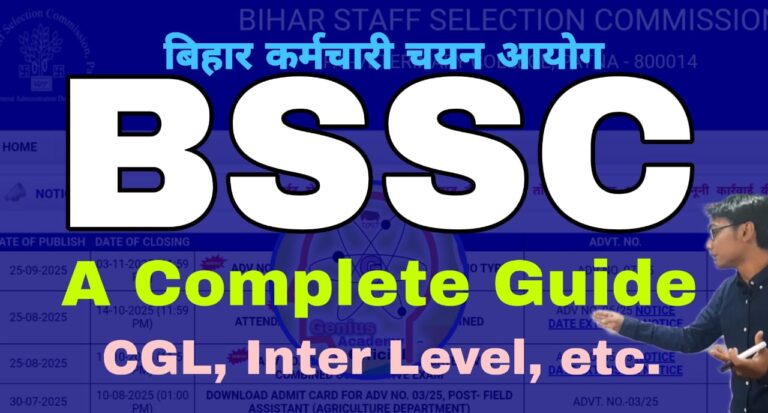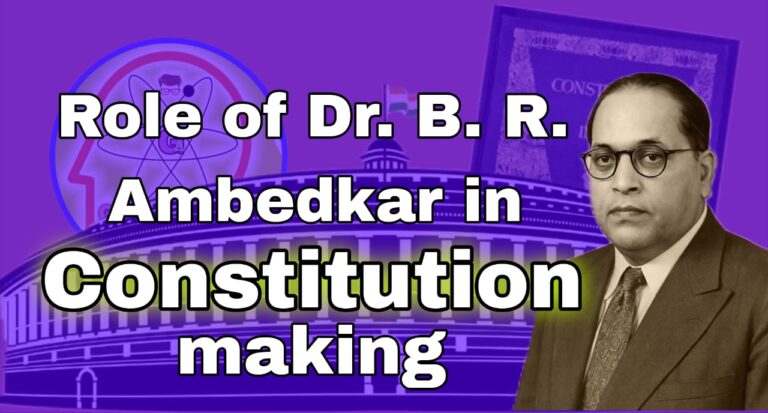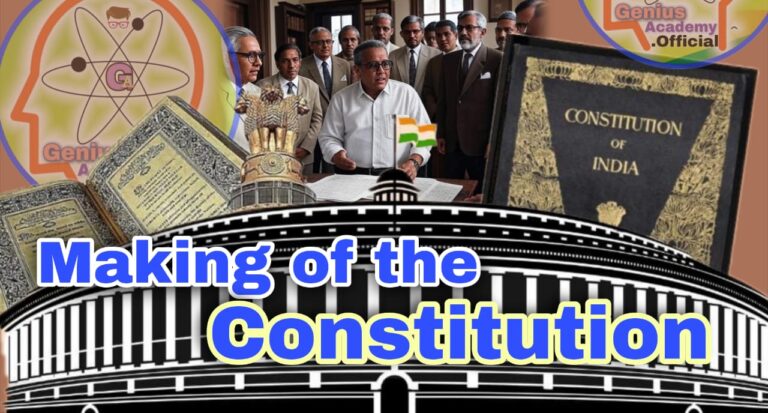Role of the Press in India’s Freedom Struggle
The press has been a crucial element in India’s nation-building journey, serving as a means to disseminate information, shape public opinion, and promote democratic values. Its significance was particularly pronounced during India’s struggle for independence and continues to be a vital pillar of democracy in contemporary times.
Historical Role of the Press in India’s Freedom Struggle
1. The Early Press Landscape
- Bengal Gazette (1780): James Augustus Hickey’s Bengal Gazette, often considered the first printed newspaper in India, was known for its critical stance against the British Raj. It laid the groundwork for future publications that would challenge colonial rule.
- British Regulatory Actions: Recognizing the power of the press, the British imposed several restrictions to control its influence:
- Censorship of Press Act, 1799: This act was introduced to prevent anti-British propaganda during the Napoleonic Wars. It required all publications to be scrutinized before release.
- Licensing Regulations, 1823: Newspapers had to obtain a government license to operate, allowing the British to suppress dissenting voices.
- Vernacular Press Act, 1878: This act specifically targeted Indian-language newspapers that published ‘seditious’ material, enabling the colonial government to confiscate presses and punish editors who opposed their rule.
2. Influential Publications and Their Impact
- Amrita Bazar Patrika (1868): Originally published in Bengali, this newspaper later became a prominent English-language publication known for its fierce criticism of British policies. It played a pivotal role in mobilizing public opinion and igniting nationalist sentiments.
- Kesari and Mahratta (1881): Founded by Bal Gangadhar Tilak, these newspapers championed the cause of Swaraj (self-rule). Through Kesari, Tilak articulated powerful messages of resistance, rallying the masses with his famous declaration, “Swaraj is my birthright, and I shall have it.”
- The Hindu (1878): Established by G. Subramania Iyer, The Hindu became a respected voice against British rule. Its balanced reporting and insightful editorials shaped public discourse and united diverse communities in the freedom movement.
- Young India and Harijan: These publications, edited by Mahatma Gandhi, were instrumental in spreading the principles of non-violence and civil disobedience. Gandhi used them as platforms to communicate directly with the masses, advocate for social reforms, and mobilize support for India’s independence.
The Post-Independence Era
1. Regulatory Measures and Press Freedom
- Press (Objectionable Matters) Act, 1951: Enacted to curb the publication of objectionable content, this act was eventually repealed in 1957 due to its misuse and suppression of free expression.
- Establishment of the Press Council of India (PCI): In 1966, the PCI was created to maintain press freedom and uphold ethical standards in journalism. It acts as a quasi-judicial body that addresses complaints related to press conduct, safeguarding the independence and integrity of the media.
2. Evolution of Contemporary Press
- Digital Transformation: The transition from print to digital media has revolutionized news dissemination. Online platforms, mobile applications, and social media have made news more accessible, but they have also posed challenges regarding credibility, speed, and ethics.
- Media Convergence: Traditional journalism now integrates text, audio, and video, creating a multi-dimensional media experience. This convergence enhances storytelling but also demands higher accountability and technological expertise.
- Citizen Journalism: The rise of social media has empowered individuals to share news in real-time, democratizing information but raising concerns about misinformation and lack of journalistic standards.
Press Council of India (PCI)
1. Formation and Role
- The PCI was established under the Indian Press Council Act, 1965, and began operations on November 16, 1966. National Press Day is observed on this date to commemorate the PCI’s role in safeguarding press freedom and maintaining journalistic ethics.
- Quasi-Judicial Authority: The PCI can take suo-motu action and investigate complaints related to unethical reporting, ensuring accountability in the media sector. Its decisions are binding and cannot be challenged in court.
- Moral Watchdog: The PCI serves as a moral compass for the press, promoting high standards of journalism and resisting external influences that compromise press freedom.
- Raja Ram Mohan Roy Award: The PCI’s highest accolade, recognizing outstanding contributions to journalism, reinforces its commitment to promoting excellence in the field.
Role of the Media in Nation-Building

1. Political Sphere
- Promoting Democracy and Good Governance: The media acts as a watchdog, exposing corruption, maladministration, and human rights abuses. By holding leaders accountable, it ensures transparency and strengthens democratic governance.
- Shaping Public Opinion: Editorials, news reports, and debates shape public perspectives on key issues, empowering citizens to make informed choices and engage in democratic processes.
- Facilitating Political Participation: Through coverage of elections, political campaigns, and policy debates, the media encourages active citizen engagement in political processes.
2. Economic Sphere
- Economic Development: By disseminating information about government policies, market trends, and economic reforms, the media facilitates informed decision-making and contributes to economic growth.
- Promoting Entrepreneurship: Highlighting success stories and providing insights into business opportunities, the media inspires entrepreneurship and innovation.
- Consumer Awareness: Media campaigns educate citizens about their rights and responsibilities, promoting ethical trade practices and protecting consumer interests.
3. Social Sphere
- Social Awareness and Education: The media raises awareness about pressing social issues such as health, education, and environmental conservation. It educates the public, fosters dialogue, and drives social change.
- Cultural Integration: By showcasing diverse traditions, the media fosters a sense of national unity and pride. It bridges cultural gaps and promotes tolerance and understanding among different communities.
- Disaster Management: During crises, the media plays a vital role in disseminating critical information, facilitating relief efforts, and mobilizing support for affected populations.
Challenges and Responsibilities of the Media
1. Misinformation and Fake News
- Threat to Social Harmony: The rapid spread of misinformation can disrupt social order, erode public trust, and polarize communities. Combating fake news requires rigorous fact-checking, editorial oversight, and public awareness campaigns.
2. Economic Pressures
- Revenue Models in Transition: The shift to digital media has disrupted traditional revenue streams for many news organizations. Financial challenges can lead to compromises in journalistic standards, with sensationalism or biased reporting becoming more prevalent.
3. Censorship and Press Freedom
- Balancing Freedom and National Security: While press freedom is essential, it must be balanced against considerations of national security, public order, and the prevention of hate speech. Navigating these complexities requires careful policymaking and ethical journalism.
The Way Forward: Responsibilities in the Digital Age
1. Upholding Ethical Standards
- Accuracy, Fairness, and Impartiality: News organizations and journalists must adhere to high ethical standards to maintain credibility. Transparent practices and unbiased reporting reinforce public trust in the media.
2. Fact-Checking and Verification
- Combating Misinformation: Rigorous verification processes, investment in fact-checking tools, and training programs for journalists ensure the reliability and accuracy of news content in an age of information overload.
3. Audience Engagement
- Interactive Platforms: The digital era offers opportunities for greater interaction between news organizations and audiences. Social media and online forums allow for feedback, fostering a more participatory media environment.
4. Promoting Media Literacy
- Educating the Public: Media literacy campaigns teach citizens to critically evaluate news sources, recognize bias, and distinguish between credible and false information. This empowers individuals to navigate the complex media landscape responsibly.
Conclusion
The press has played an indispensable role in India’s historical struggle for independence and continues to serve as a cornerstone of democracy today. By fostering transparency, encouraging social and economic development, and shaping public opinion, the media contributes significantly to nation-building. However, in the modern digital age, it faces new challenges, from misinformation and economic pressures to evolving regulatory landscapes. Upholding ethical standards, promoting media literacy, and adapting to technological changes will be critical for the press to maintain its relevance and integrity as a pillar of democracy. Through continuous evolution and unwavering commitment to its core values, the press can remain a powerful force for progress, accountability, and positive social change.
Daily Mains Practice Questions
UPSC (CSE) Mains Questions on the Role of the Press in India’s Freedom Struggle and Contemporary Significance:
1. General Studies Paper I (Historical Context and Freedom Struggle)
| [Q1.] Discuss the role of the press in India’s freedom struggle. Highlight how key publications contributed to mobilizing public opinion against colonial rule. |
| [Q2.] Examine the impact of colonial regulatory measures such as the Censorship of Press Act, 1799, and the Vernacular Press Act, 1878, on the Indian press during the freedom movement. How did the press overcome these challenges? |
2. General Studies Paper I (Post-Independence and Evolution)
| [Q3.] Explain the significance of the establishment of the Press Council of India (PCI) in safeguarding press freedom and promoting ethical journalism. How effective has it been in fulfilling its mandate? |
| [Q4.] Trace the evolution of the press in India post-independence, with a focus on its digital transformation. What challenges and opportunities does this transformation present? |
3. General Studies Paper II (Media’s Role in Nation-Building)
| [Q5.] Critically analyze the role of the media in strengthening democracy and promoting good governance in India. How does it contribute to shaping public opinion and enhancing political participation? |
| [Q6.] Discuss how the media contributes to economic development in India through the dissemination of information, promotion of entrepreneurship, and consumer awareness. |
| [Q7.] Evaluate the social responsibilities of the media in fostering cultural integration and raising awareness about social issues in India. Illustrate with examples. |
| [Q8.] Discuss the importance of media literacy and public awareness campaigns in combating misinformation in the digital age. How can these initiatives strengthen democratic values? |
4. General Studies Paper IV (Contemporary Challenges and Ethical Responsibilities)
| [Q9.] “The rapid spread of misinformation is a key challenge facing the media in India.” Discuss the impact of misinformation on public trust and social harmony, and suggest measures to address it. |
| [Q10.] Analyze the economic pressures faced by the media in the digital age and their impact on journalistic standards. What measures can be taken to balance economic viability with ethical reporting? |
| [Q11.] In light of increasing censorship and concerns over national security, critically assess how India can maintain press freedom without compromising public order and national interests. |
| [Q12.] Evaluate the role of ethical standards, fact-checking, and audience engagement in ensuring the credibility and reliability of news in a fast-changing media landscape. |
Frequently Asked Questions (FAQs) on the Role of the Press in India’s Freedom Struggle and Its Contemporary Relevance:
1. What role did the press play during India’s freedom struggle?
Ans:— The press served as a powerful tool for spreading anti-colonial sentiment, creating awareness, shaping public opinion, and mobilizing the masses against British rule. Newspapers like Kesari, Amrita Bazar Patrika, and The Hindu inspired nationalism, criticized colonial policies, and facilitated political and social movements.
2. How did the British government suppress the press during colonial rule?
Ans:— The British imposed restrictive regulations such as the Censorship of Press Act, 1799, and the Vernacular Press Act, 1878, to control the press. These laws sought to prevent the spread of anti-British content by requiring newspapers to obtain licenses, and they allowed the confiscation of printing presses that published seditious material.
3. What is the role of the Press Council of India (PCI)?
Ans:— The PCI was established in 1966 to uphold press freedom and maintain ethical standards in journalism. It acts as a quasi-judicial body, addressing complaints related to press conduct and promoting responsible journalism.
4. How has digital transformation impacted the media in India?
Ans:— The shift from print to digital media has revolutionized how news is produced, distributed, and consumed. Digital platforms, mobile apps, and social media offer immediacy and accessibility but also pose challenges like misinformation, reduced revenue for traditional media, and the need for ethical digital journalism.
5. Why is the media referred to as the ‘fourth pillar’ of democracy?
Ans:— The media is often called the fourth pillar of democracy because it plays a key role in ensuring transparency, accountability, and public participation in governance. It acts as a watchdog, exposes corruption, and enables informed decision-making by citizens.
6. What are some challenges faced by the media in modern India?
Ans:— Contemporary challenges include the spread of fake news, economic pressures due to shifts in revenue models, maintaining ethical standards, and navigating censorship issues while ensuring press freedom and national security.
7. How does the media contribute to economic development in India?
Ans:— The media disseminates information on government policies, market trends, and economic reforms, enabling businesses and citizens to make informed decisions. It promotes entrepreneurship and educates consumers about their rights, fostering economic growth and innovation.
8. What is the significance of ethical standards and fact-checking in journalism?
Ans:— Adhering to ethical standards ensures accurate, fair, and impartial reporting, maintaining public trust. Fact-checking helps combat misinformation, safeguarding the reliability and credibility of news content.
9. What role does media literacy play in combating misinformation?
Ans:— Media literacy empowers citizens to critically evaluate news sources, recognize bias, and distinguish between credible and false information. It helps prevent the spread of fake news and promotes informed decision-making.
10. How can the media foster social integration and cultural unity?
Ans:— By showcasing diverse cultures, traditions, and social issues, the media fosters a sense of national identity, cultural pride, and unity. It facilitates dialogue among different communities, promoting social cohesion and tolerance.






There is a deliberate elegance in your writing, where clarity and nuance coexist. Each sentence contributes to a cohesive flow, inviting the reader to pause, reflect, and fully inhabit the layered meaning and subtle rhythms of the prose.